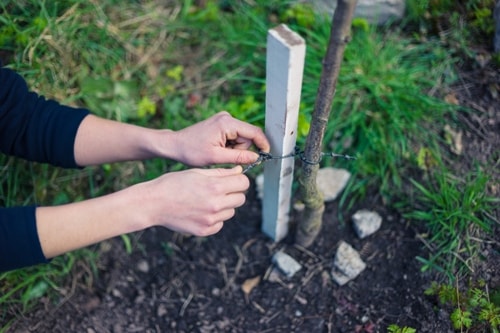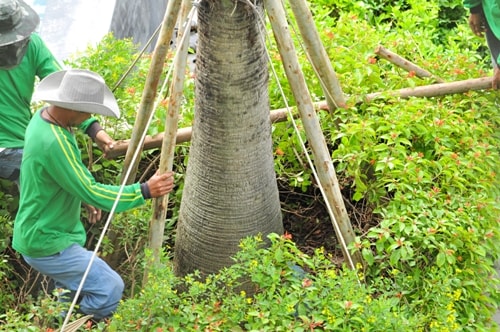
Staking your newly planted tree is a great way to give it a great start. Crooked trunks can be righted in the first year of a young tree’s life. Staking will help a tree grow tall and straight. Some tree experts say that even if your tree is 12 feet tall with a one-inch diameter trunk, it may be a good idea to stake it. Tall, skinny young trees may need extra support.
Staking can add extra protection for your tree. High-traffic areas leave trees vulnerable. Windy areas can cause young saplings to bow. Staking could save a tree’s life.
When staking, follow some ground rules:

- Use two or three wooden or metal stakes which can be driven two to three feet in the ground.
- Place the stakes outside of the tree’s root ball (a minimum of eighteen inches from the trunk).
- Use support materials such as biodegradable tape, old stockings, a water hose, or wire.
- Nothing should dig into the tree trunk or cause damage.
Remember to not tie the support materials too tight. Trees need to adapt to their new environment. Too much restriction could weaken the tree. Your support material should allow the tree to grow naturally.
A key factor for successful staking is knowing when to remove the stakes and support material. During the first year, monitor the staking gear to make sure it is adequate and doing its job. Plan to remove the stakes at the end of twelve months. Leaving the support material too long could lead to long term and sometimes irreparable damage, shortening the life of the tree.

For more great tree care advice, call Great Northern ReGreenery today at (905) 775-7444. We are a local, family-owned business with a solid reputation and a desire to serve your tree care needs.





